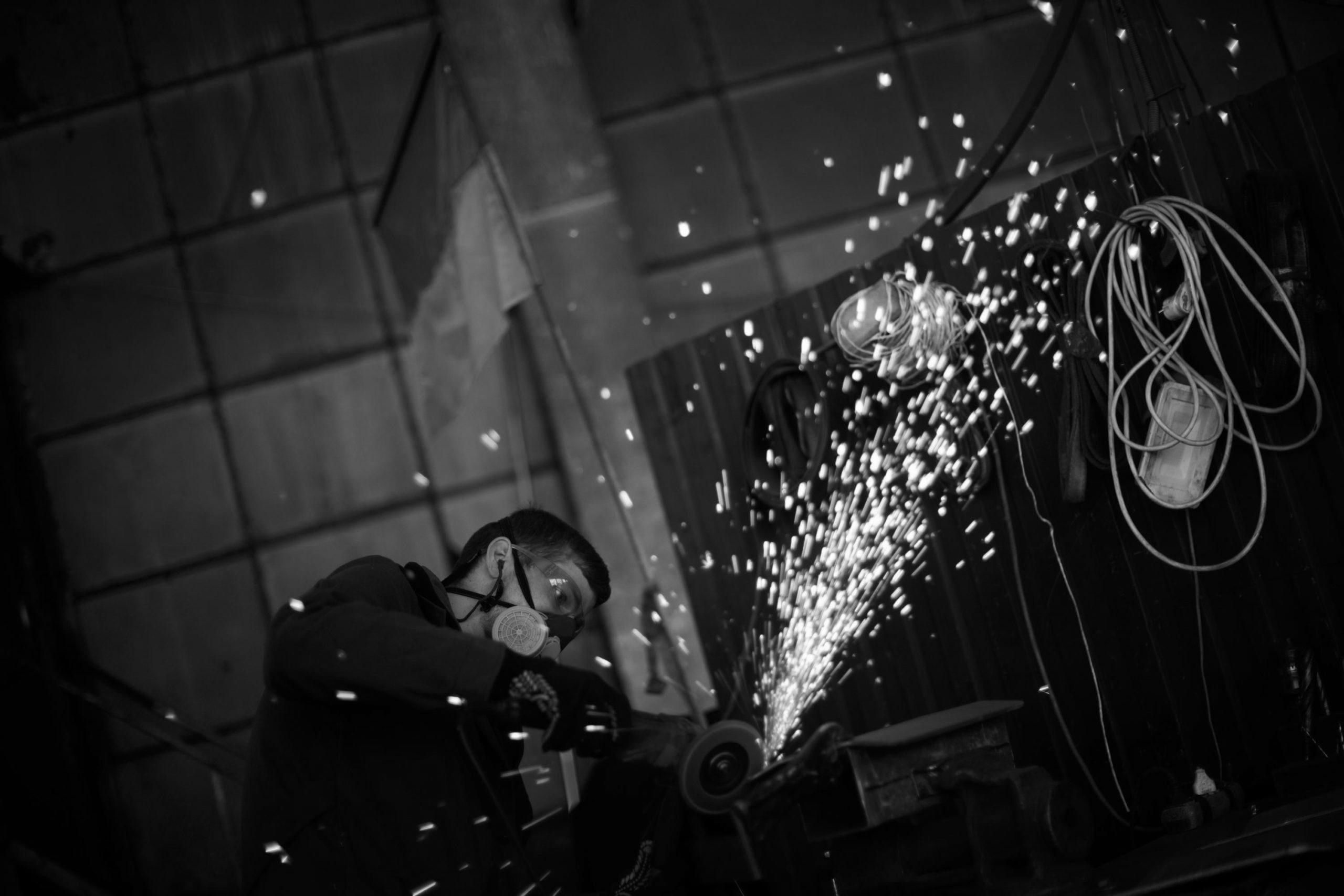Shield the body: Ukraine volunteers craft armor, camouflage
Warning: Undefined variable $post_id in /home/webpages/lima-city/booktips/wordpress_de-2022-03-17-33f52d/wp-content/themes/fast-press/single.php on line 26

2022-05-09 09:16:18
#Protect #physique #Ukraine #volunteers #craft #armor #camouflage
ZAPORIZHZHIA, Ukraine (AP) — Sparks fly as a circular noticed slices into steel, while welders nearby work feverishly to the sound of blaring heavy metal. Upstairs, sewing machines clatter as girls mark patterns on material being shaped into bulletproof vests.
An old industrial complex within the southeastern Ukrainian riverside city of Zaporizhzhia has develop into a hive of exercise for volunteers producing every little thing from body armor and anti-tank obstacles to camouflage nets, moveable heating stoves and rifle slings for Ukrainian troopers preventing Russia’s invasion. One part focuses on autos, armor-plating some, converting others into ambulances. Another organizes food and medical deliveries.
With the entrance line about 50 kilometers (30 miles) from the city, some sections of the operation, such as the stitching of bulletproof vests, are working around the clock in shifts to meet demand. Crowdfunding has introduced in sufficient cash to buy steel from Sweden, Finland and Belgium, which is lighter than native metal, organizers say, an important quality for body armor.
The operation is the brainchild of local movie star Vasyl Busharov and his friend Hennadii Vovchenko, who ran a furniture-making enterprise. They named it Palianytsia, a type of Ukrainian bread whose name many Ukrainians say cannot be pronounced properly by Russians.
The operation relies totally on volunteers, who now number more than 400 and are available from all walks of life, from tailors to craftsmen to legal professionals. Aside from those concerned in manufacturing, there are additionally drivers delivering humanitarian assist and medical gear purchased by way of donated funds.
“I really feel I am wanted here,” mentioned fashion designer Olena Grekova, 52, taking a brief break from marking cloth for vests.
When Russia invaded on Feb. 24, she was in Thailand seeking inspiration for her spring assortment. Initially, she stated, she questioned whether it was a sign from God that she shouldn’t return. Her husband and two grownup sons urged her to not.
“But I decided that I had to return,” she said.
She had known Busharov for years. Arriving home on March 3, she gathered her gear the following day and by March 5 was at Palianytsia. She’s been working there on daily basis since, bar one, typically even at night.
Shifting from designing backless ballgowns to creating useful bulletproof vests was “a brand new experience for me,” Grekova said. But she sought feedback from soldiers for her designs, which have armor plates added. Now she is helping to provide several versions, including a prototype summer vest.
In one other part of the economic complex, 55-year-old Ihor Prytula was busy making a brand new camouflage net, winding items of dyed material via a string body. A furniture-maker by commerce, he joined Palianytsia firstly of the battle. He had some navy experience, he said, so it was easy to get suggestions from soldiers on what they wanted.
“We converse the identical language,” he said.
For Prytula, the conflict is personal. His 27-year-old son was killed in late March as he helped evacuate individuals from the northern town of Chernihiv.
“The war and dying, it’s dangerous, belief me, I know this,” he stated. “It’s bad, it’s tears, it’s sorrow.”
The call for volunteers went out as soon as the warfare started. Busharov announced his challenge on Facebook on Feb. 25. The following day, 50 people turned up. “Subsequent day 150 people, next day 300 people. ... And all collectively, we try (to) defend our metropolis.”
They started out making Molovov cocktails in case Russian troopers advanced on Zaporizhzhia. In 10 days, they produced 14,000, he stated. Then they turned to producing anti-tank obstacles known as hedgehogs — three giant metal beams soldered collectively at angles — used as a part of the town’s defenses. Soon, Busharov and Vovchenko stated, they discovered another pressing need: there weren’t sufficient bulletproof vests for Ukraine’s soldiers.
But studying the best way to make one thing so specialised wasn’t simple.
“I wasn’t truly linked with the military in any respect,” stated Vovchenko. “It took two days and three sleepless nights to understand what needs to be accomplished.”
The team went via numerous forms of metal, making plates and testing them to test bullet penetration. Some didn’t offer enough protection, others have been too heavy to be functional. Then they had a breakthrough.
“It seems that steel used for car suspension has very good properties for bullet penetration,” Vovchenko stated, standing in front of 4 cabinets of test plates with varying degrees of bullet injury. The one manufactured from car suspension steel confirmed dozens of bullet marks however none that penetrated.
The vests and every part else made at Palianytsia are provided free to soldiers who request them, as long as they will prove they're within the navy. Every plate is numbered and every vest has a label noting it is not for sale.
To date, Palianytsia has produced 1,800 bulletproof vests in two months, Busharov said, including there was a ready checklist of around 2,000 more from throughout Ukraine.
Vovchenko mentioned they have heard about up to 300 folks whose lives have been saved by the vests.
Figuring out that's “incredibly inspiring and it keeps us going,” he said.
____
Inna Varenytsia in Zaporizhzhia, Ukraine, contributed.
___
Observe all AP stories on the warfare in Ukraine at https://apnews.com/hub/russia-ukraine
Quelle: apnews.com